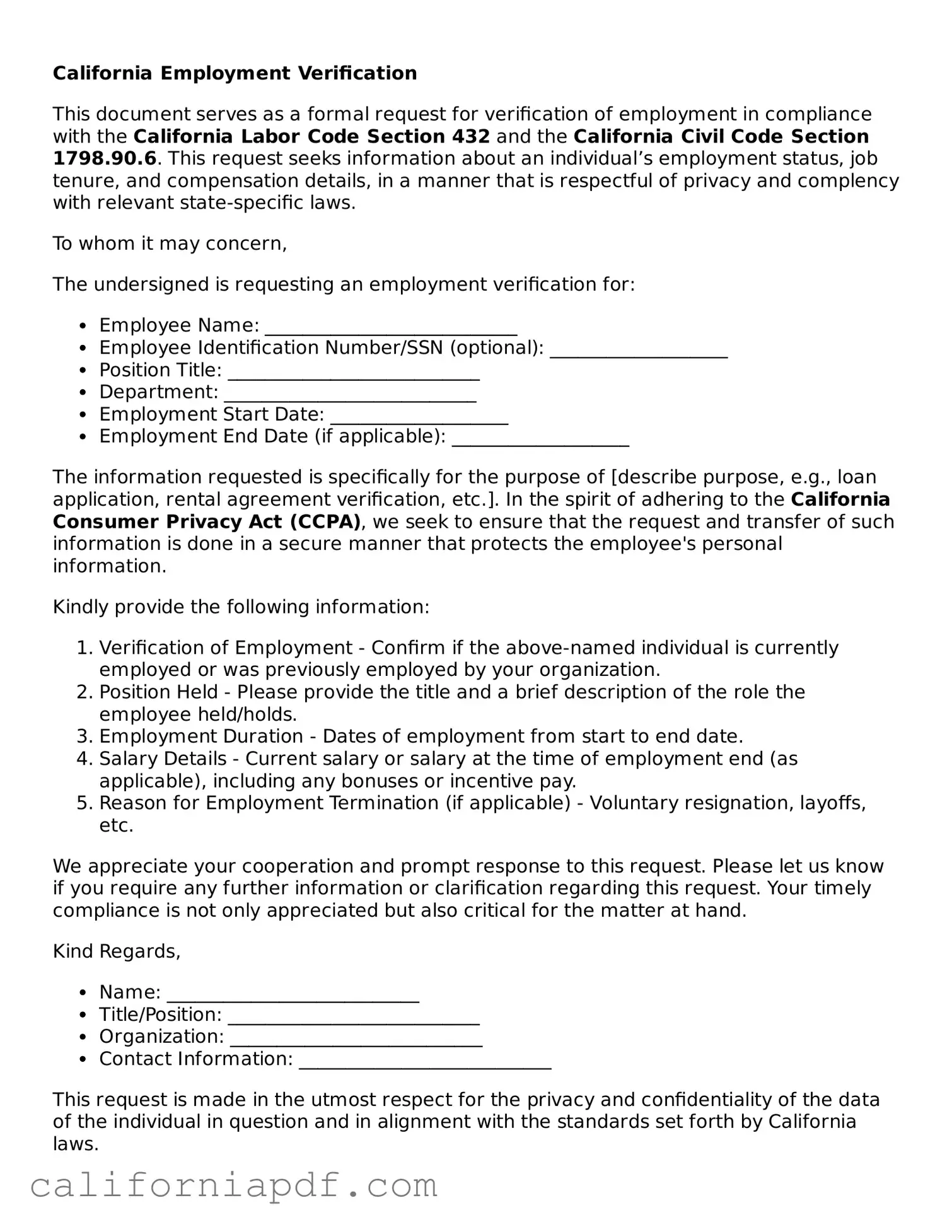California Employment Verification
This document serves as a formal request for verification of employment in compliance with the California Labor Code Section 432 and the California Civil Code Section 1798.90.6. This request seeks information about an individual’s employment status, job tenure, and compensation details, in a manner that is respectful of privacy and complency with relevant state-specific laws.
To whom it may concern,
The undersigned is requesting an employment verification for:
- Employee Name: ___________________________
- Employee Identification Number/SSN (optional): ___________________
- Position Title: ___________________________
- Department: ___________________________
- Employment Start Date: ___________________
- Employment End Date (if applicable): ___________________
The information requested is specifically for the purpose of [describe purpose, e.g., loan application, rental agreement verification, etc.]. In the spirit of adhering to the California Consumer Privacy Act (CCPA), we seek to ensure that the request and transfer of such information is done in a secure manner that protects the employee's personal information.
Kindly provide the following information:
- Verification of Employment - Confirm if the above-named individual is currently employed or was previously employed by your organization.
- Position Held - Please provide the title and a brief description of the role the employee held/holds.
- Employment Duration - Dates of employment from start to end date.
- Salary Details - Current salary or salary at the time of employment end (as applicable), including any bonuses or incentive pay.
- Reason for Employment Termination (if applicable) - Voluntary resignation, layoffs, etc.
We appreciate your cooperation and prompt response to this request. Please let us know if you require any further information or clarification regarding this request. Your timely compliance is not only appreciated but also critical for the matter at hand.
Kind Regards,
- Name: ___________________________
- Title/Position: ___________________________
- Organization: ___________________________
- Contact Information: ___________________________
This request is made in the utmost respect for the privacy and confidentiality of the data of the individual in question and in alignment with the standards set forth by California laws.
